
Strawberry Meyer Lemon Marmalade
The sweetness of strawberries and the freshness of lemons is a wonderful combination that can brighten any morning! This Strawberry Meyer Lemon Marmalade is good enough to enjoy all year long! While you could use regular lemons in this recipe, the Meyer Lemons are really the ideal choice because…
- They are sweeter than regular lemons;
- They have a thin rind that’s edible;
- They yield more juice than regular lemons;
- They have a beautiful floral aroma;
- They are not as acidic as regular lemons;
Our favorite way to preserve this wonderful combination is Marisa McClellan’s recipe for Strawberry Meyer Lemon Marmalade which she made at our Preservation Station at the Pennsylvania Farm Show a few years back. The recipe is in her book Preserving by the Pint. This recipe produces a marmalade that is so vibrant with color, that it feels and tastes like a ray of sunshine.
If you’re making this during the winter and can’t get your hands on local strawberries, that’s okay. The rest of the marmalade components make up for the lack luster strawberries available that time of year.
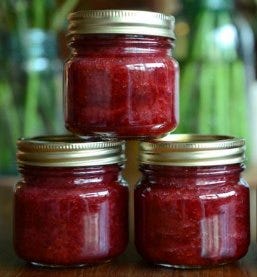
Recipe reprinted with permission from Preserving by the Pint © 2014 by Marisa McClellan, Running Press, a member of the Perseus Book Group.
Yield: 4 (half-pint/250 ml) jars
- 1 pound/460 g Meyer lemons
- 1 pound/460 g strawberries
- 2 cups/400 g cups/400 g granulated sugar
-
Wash and dry the lemons. Trim off the ends and slice the fruit in half from to top to bottom. Using a sharp paring knife, cut out the pithy center core of each lemon half and remove the seeds. Reserve both the pithy cores and seeds (we’ll be using them as a pectin source).
-
When all lemons have been trimmed, slice the halves into thin half-moons, place in a glass or plastic bowl, and cover with 2 cups/480 ml of water.
-
Gather up the reserved seeds and pith and place them in the center of a cheesecloth square. Tie the bundle up tightly to prevent the seeds from escaping. Add this bundle to the bowl where the lemon slices are soaking. Cover and set aside.
-
While the lemon slices soak, wash the strawberries and chop them well. Place them in a separate glass or plastic bowl and add the sugar. Stir to combine and cover.
-
Let both bowls sit for at least an hour and up to 3 hours. Stir the strawberries once or twice, if possible, to help the sugar draw out their liquid.
-
When you’re ready to cook the marmalade, prepare a boiling water bath and 4 half-pint/250 ml jars. Place 4 lids in a small saucepan of water and bring to a gentle simmer.
-
Pour the lemon mixture and the strawberries mixture into a wide, nonreactive pan. Bring to a boil and cook over medium-high heat for 30 to 40 minutes, stirring regularly.
-
The marmalade is done when it reaches and holds 220°F/105°C, looks shiny, and is able to pass the plate test. The bag of seeds and pith can be removed.
-
Funnel the finished marmalade into the prepared jars, leaving 1/2 inch/12 mm of headspace. Wipe the rims, apply the lids and rings, and process in boiling water for 10 minutes.
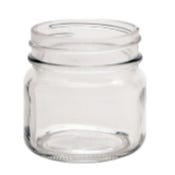
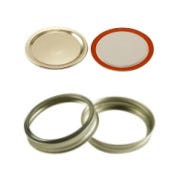
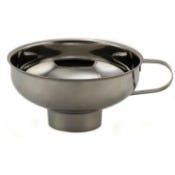



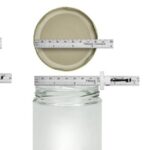

Question: Do you leave the bundle of pith and seeds in while cooking the marmalade or do you remove it before cooking? Thank you!!
Good question. Often, the bundle of seeds/pith is allowed to stay at least for the first portion of cooking in order to extract as much of the pectin as possible. However, I see that this recipe doesn’t indicate when to remove it. We’ll check with Marisa since this is one of her recipes. 🙂
Can you use frozen strawberries?
Do you cook the lemon water as well as the sliced lemons?
What is a “plate test?”
Thank you?
Hello Sue, Yes, you can use frozen strawberries. However, when they thaw, the juices will likely be flowing right out. Yes, the lemon mixture includes the lemon water and the slices. The plate test is one way to check to see if you’ve reached a good set for your preserves. You can see how to do that in this great post by Food in Jars. https://foodinjars.com/blog/check-set-plate-test/
Sounds wonderful . Can’t wait for June and July here in Maine for real strawberries! I made peach/orange marmalade several years ago and that was yummy.
I’m a bit unsure about the lemons. They are just sliced and that’s it? Am I putting whole lemon wedges in my jam ? Are they supposed to be puréed somewhere along the way, does the jam end up with big hunks of lemons in it, does cooking break down the lemons-peel and all????
Marmalade is meant to have some proof of fruits in it. 🙂 It allows you to see the fruit parts and portions of clarity. Some people chop them a bit more, but a good marmalade will have strips of citrus throughout.
What is the difference between Meyers lemons and other lemons? Can I use regular lemons?
Hi Nelleke,
This article on the difference between Meyer lemons and other lemons might be helpful for you to read. Regular lemons lack the sweetness of Meyer lemons. So, regular lemons will add a stronger acidity, while Meyer lemons will add more sweetness to a recipe.
Quick question
Do you only add the cheesecloth with pithe and seeds to soaking lemons, not to the strawberry and lemon mixture
Yes. The fruit meats stay in the marmalade.